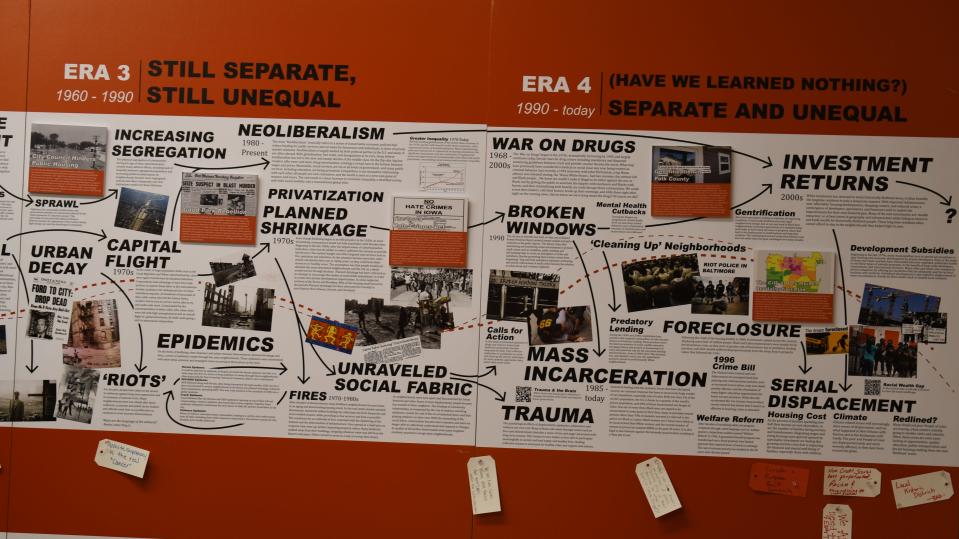Walter Suza guest column: Truth and lies define the promise of American meritocracy
Meritocracy is a sociopolitical idea that individuals should be rewarded with power and influence because of their effort, talents and accomplishments.
Meritocracy is tied to the belief in the American Dream, which says that in the United States, every citizen who works hard, with determination and initiative, deserves equal opportunity to succeed and prosper.
But like America the idea, American meritocracy is also imperfect. It is a mixture of truths and lies. The first lie is that opportunities to advance are equal for all. The second lie is that opportunities to become meritorious are also equal for all.
Despite its shortcomings, meritocracy is hailed as the catalyst of America’s innovation and advancement. Some invoke meritocracy to dismiss racial inequality.
Some bring it up in opposition to affirmative action and diversity, equity and inclusion, or DEI. Statements such as “Get a job” aim to shame those on social support and in poor-paying jobs.
More: Redlining: How racist policy from a 1930s program has left scars still visible in today's Des Moines
To appreciate the hypocrisy, let’s travel back to the time America was enslaving Africans. There we will see that meritocracy has never worked for all. If meritocracy worked for all, enslaved Africans who brought to America knowledge of how to cultivate crops such as rice and toiled in plantations should have occupied the highest echelon of America’s society. They didn’t. America left them behind.
America declared independence in 1776 but enslaved Africans remained in bondage, which meant working without rewards of wealth, position and power. Back then, meritocracy worked only for the enslaver. For the enslaved Africans, it was just a sad imagination.
Imagine arriving here with nothing but your body in chains. Imagine cultivating land until your hands are covered with blood. You are whipped so much. Bending to harvest tobacco cracks the skin on your back. You are oppressed under this kind of meritocracy for centuries.
Imagine The Homestead Act of 1862 gives white families 160 acres of land, but leaves you out because you are not a citizen. Even after the Emancipation Proclamation in 1863, your people are lynched en masse. Even after Reconstruction ended in 1877, Black Codes are written to keep you behind. Even after you migrate to the Midwest, North and West, redlines are drawn making your neighborhood the least developed, your schools the least developed, your hospitals the least developed, your children the least likely to be deemed meritorious by the American meritocracy.
Imagine being behind because your forebears were also denied “40 acres and a mule,” abused in sharecropping, terrorized by Jim Crow, segregated, faced unrelenting racism.

In a meritocratic society that still struggles with marginalization, the mindset which created the problem still does not have a solution. The solution is simple. Allow the marginalized equal opportunity to move into positions of power and influence.
But in the United States power and influence stem from material wealth. Yet there is a wealth gap between Black and white Americans. On average, a Black family has wealth that is one-10th that of a white family. Black workers also earn less relative to their white counterparts. The annual median income for Black workers is $32,000, while for white workers it is $42,000.
Imagine relying on the meager earnings and wealth to advance a child in a society that idolizes meritocracy. With diminished wealth and income, how do you raise a child when, according to the U.S. Department of Agriculture, a family needs $284,000 to raise a child through age 17? If a child wishes to become a medical doctor, it would cost $10,000 just to apply to medical school. If the child gets into medical school, she is likely to graduate with a $250,000 debt.
American meritocracy says ignore income, ignore wealth, ignore the child’s race. If you wish for your child to attend an elite school you must overcome more obstacles. Because of your low income, you can’t afford to pay for tutors, which will impact your child’s test scores.
American meritocracy says the focus should be on excellent test scores, admission essays, grades, which all depend on significant financial investment even before the child is born.
Even if the parents raise the finances to usher their child through meritocracy, if the child is Black, on average he is more likely to grow up in underfunded and overpoliced neighborhoods. If the Black child survives poverty and the police, to attend the elite school, which is likely to be predominantly white, she might not escape racial stereotyping.
American meritocracy says the playing field is equal. No DEI. No equal opportunity. Ignore the stressors experienced by people of color. Ignore that some wealthy parents cheat to get their children into elite schools. Ignore that slavery helped some to become meritorious.
“Slavery is what it is; and it is nothing else," said Nathan Lord, Dartmouth’s sixth president, who was pro-slavery. Not shocking. Several Ivy League universities, including Harvard, have ties to slavery.
“American meritocracy works!” screams the status quo.

Walter Suza of Ames, Iowa, writes frequently on the intersections of spirituality, anti-racism and social justice. He can be contacted at wsuza2020@gmail.com.
This article originally appeared on Ames Tribune: Opinion: Truth and lies define the promise of American meritocracy

